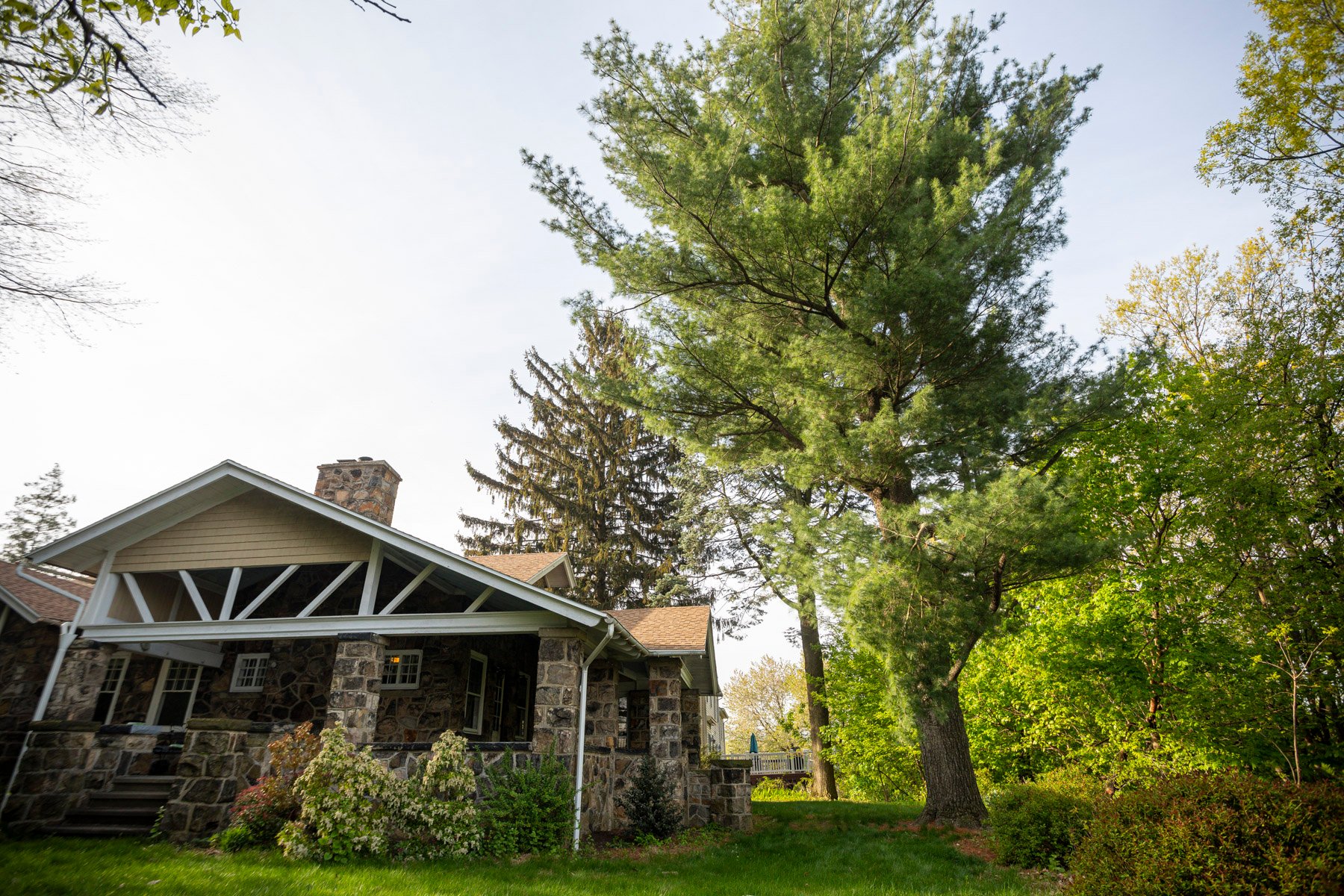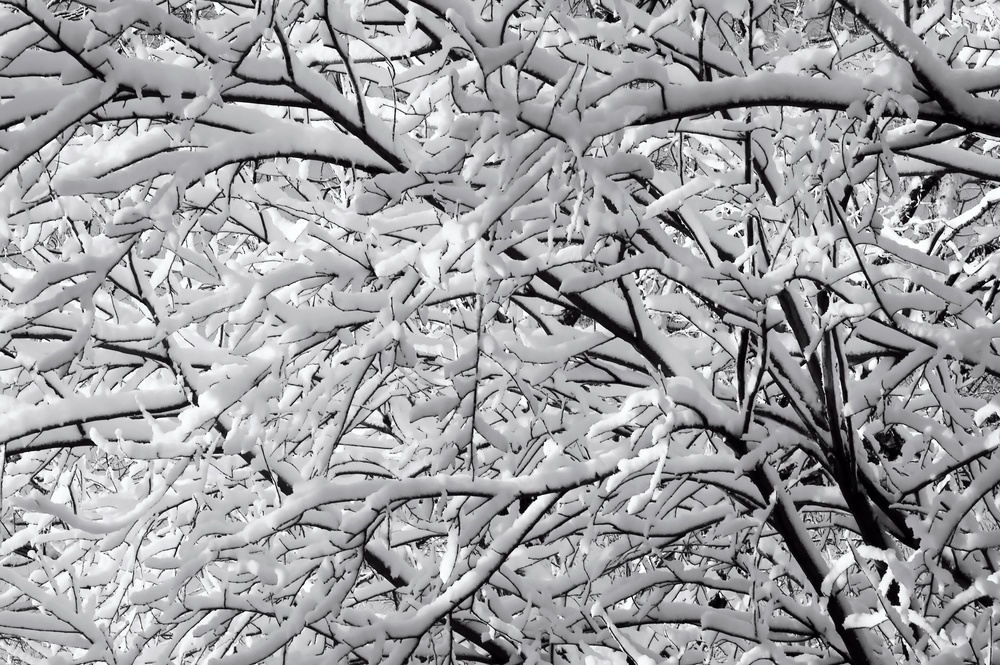The last thing that you’re probably thinking about during the winter is watering your trees. But watering trees in winter is warranted at times and can help keep these valuable assets thriving and healthy.
Even though trees and shrubs go dormant in the winter, they still need water in order to survive. Harsh winter weather can really take a toll on your landscape. Winter tree damage due to lack of water might not be overtly apparent in deciduous trees but can result in evergreens turning brown.
And over time, a lack of water to any tree can weaken its structure.
In this article, we’ll answer some of your questions about winter tree watering. We’ll answer some of the questions that you might have and guide you toward making the best decisions for your trees.
Tree Water Loss in Winter
People rarely give much thought to how much water their trees are receiving (or need) in the winter. But the dry air, windy conditions, and fluctuating temperatures can take a toll on trees.

The soil also tends to be excessively dry in the winter, even when it has snowed. Water can dry up and leave your trees lacking.
The resulting tree water loss in winter can cause your trees to struggle. Winter desiccation can occur when the amount of water lost by your trees and shrubs is greater than the amount of water it takes in.
Evergreen trees and shrubs can be particularly susceptible to this damage.
When the ground freezes, roots can no longer take up any water so the plants begin to use the water stored in their leaves.
This can be managed with both winter watering and anti-desiccant applications for plants.
By late-November to early-December, an anti-desiccant spray is applied on a warmer winter day and provides a protective coating that keeps the leaves from losing too much water through evaporation. This helps to save every last drop of water for the plant.
A Certified Arborist can let you know which trees and shrubs would most benefit from an anti-desiccant spray.
Watering Trees in Winter
Proper winter tree watering is important when it comes to setting your trees up for success.
Water trees during periods when the ground is not frozen.
This will occur during mild spells over the winter. The goal is to make sure that your trees have enough water before the ground is frozen (at which point, they will no longer be able to take in that water).
Trees usually only need to be watered once or twice a month in the winter (when the soil temperatures are above 40 degrees). Of course, trees in highly windy locations may require more water.
Typically, you’d want to avoid winter tree watering if the soil temperatures are below 40 degrees or when sustained freezing conditions are in the forecast.
Some of the benefits of winter tree watering include:
- Avoiding Dehydration: When trees and shrubs do not receive the water they need, even in the winter, they can dry out. This is particularly concerning for evergreens, which lose water through transpiration.
- Root Protection: Properly hydrated soil can actually help to insulate the roots from the extreme cold.
- Improved Spring Growth: Trees are still absorbing water in the winter, which is essential to helping push springtime growth.
Proper Winter Tree Watering is Essential
Of course, proper watering is always a key to success. Just like during the growing season, you want to avoid overwatering your trees as this can lead to conditions like root rot.
Check the saturation level of the soil before watering. This can be done with the “screwdriver test.” Try wedging a screwdriver into the ground. If it goes easily, you don’t need to water.
When you do water trees, aim for a deep soak. This “deep watering” method encourages roots to develop deep into the soil, where moisture is more readily available more often.
Shallow watering causes roots to grow outward, just under the surface of the soil, making them more prone to heat, dehydration and soil compaction.
Shallow root systems also leave your trees more vulnerable to blowing over during storm season. When roots grow deep and wide, you’ll wind up having to water less and will have stronger and more securely anchored trees.
It is best to water earlier in the day before colder/freezing temperatures might strike at night.
Keeping Winter Tree Damage on Your Radar
Winter tree watering is just one way to protect your trees and shrubs from potential winter damage. The snow, ice, and wind can lead to other potential trouble with your trees and shrubs that may need to be addressed.
For instance, snow and ice-damaged trees and shrubs can be a huge source of stress, especially if it is putting your property at risk in some way.

All of this is why it’s important to keep up with tree care, even in the winter.
Although trees tend to sometimes fall off of peoples’ radars in the winter, this is actually an excellent time to be thinking about them. In fact, we recommend a winter tree inspection so that you can find out what services your tree might need to help it continue to look and perform its best.
Trees are more easily inspected in the winter because they don’t have their leaves. When trees are bare, Certified Arborists can see everything. This will allow them to help spot a structural defect with a branch that they might not otherwise see.
During a winter tree inspection, it will be determined which trees/branches might benefit from pruning. There are significant benefits to dormant pruning during the winter. It’s easier to make strategic cuts to the tree when the branches are not covered in leaves. It will be clear exactly which branches should be pruned.
Winter Tree Questions? We’re Here to Help
Whether you have questions about watering trees in winter, possible winter tree damage, or winter inspections and pruning, we’re here to help.
We can provide professional recommendations that will help set you up for success. This includes watering tips and guidance.
At Joshua Tree, we can help you feel more prepared for protecting trees and shrubs in winter. And, we can also help you address trees and shrubs that have already been damaged. With a professional in your corner, you can feel confident that you’re in good hands.
If you’re interested in having your trees inspected and their health assured, contact us for a free consultation or give us a call at 833-JTE-TREE.




